Passive Fire
Protection
Contain and Seal
Passive Fire
Protection
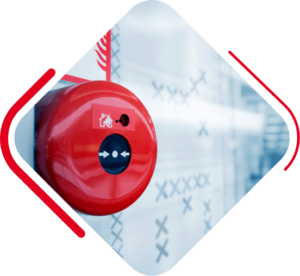
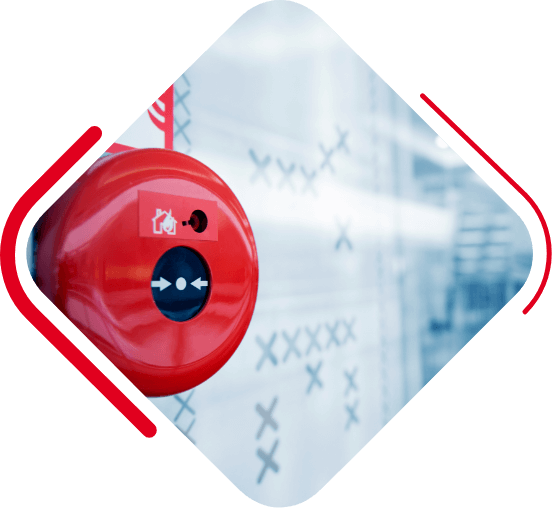
Fire protection engineering is not just about active protection, such as automatic sprinklers and fire alarms, but involves multiple forms of protection that include both active and passive elements.
Fire protection engineering is not just about active protection, such as automatic sprinklers and fire alarms, but involves multiple forms of protection that include both active and passive elements.
Passive fire protection (PFP) is a range of measures designed to prevent, contain or slow the spread of fire from the area of origin to other areas of a building and give occupants more time to evacuate
PFP is one of the three key components of structural fire protection in buildings, along with Active Fire Protection and Education
Automatic offers a comprehensive range of passive fire solutions and products. Our dedicated and experienced staff can offer efficient installation and a range of passive fire protection materials.
The below items are to be included with an accordion feature to the side of the above text or other design feature that minimises scrolling to the product boxes in section two.
Importance of Passive Fire Protection
• Reduce fire spread
• Reduce rapid-fire spread which could trap occupants
• Reduce the danger level of the fire to occupants, firefighters and people in the vicinity.
• Create a protected emergency exit route.
• Contain the fire in the absence of a fire suppression system.
What is Passive Fire Protection/Compartmentalisation?
The compartmentalisation of the sub-division of a building into separate compartments through the use of walls and floors made of fire-resistant material for use in:
Fire Rated Boards
Fire rated boards are designed to prevent the spread of fire from one compartment to another where mechanical and electrical services penetrate separating walls and doors. They provide up to four hours fire resistance. All items have been comprehensively tested and assessed by independent authorities in accordance with BS476 part 20 and BS EN1 366-3 for up to 4 hours fire resistance.
Fire rated boards consist of a high-density mineral fibre slab which is factory pre-coated with a water-based, fire-resistant coating. When used in conjunction with fire rated coating and mastic, the boards provide an effective fire barrier for large multiple-service openings.
Fire rated boards are suitable for use in any building which has single or multiple services penetrating fire rated compartment walls and floors. Typical types of buildings in which fire rated boards are commonly used are:
Retail Stores and Shopping Centres
Communications and Broadcasting Facilities
Commercial Buildings
Power Stations
Control Rooms
When exposed to the heat of a fire, the excellent thermal insulation properties of fire rated boards provide an effective barrier, preventing the passage of fire and elevated temperatures.
The fire-resistant coating and mastic seal around services and board joints provide a further barrier to the passage of cold smoke.
Fire rated boards provide variable hours (1, 2, 3 or 4) of fire resistance to all floor/wall openings.
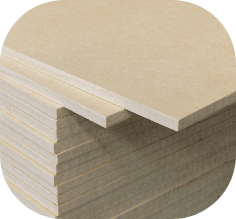
Acrylic Intumescent Mastic
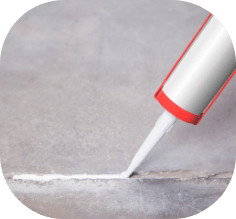
Acrylic intumescent mastic is designed to prevent the spread of fire from one compartment to another wherever services penetrate separating walls and floors or wherever a gap remains between elements in fire rated constructions, walls or floors.
Acrylic intumescent mastic provides up to four hours of fire resistance.
Acrylic intumescent mastic is a single part, water-based acrylic mastic, which provides a firm but flexible seal to joints in a variety of fire-rated structures. It will not support combustion and when exposed to fire it expands effectively to seal any gaps, preventing the spread of smoke and fire through any joints.
Comprehensively tested and assessed by independent authorities in accordance with BS476 part 20BS ENl 366-3, ASl 530.4, AS4072.1 and SABS 0177 Part 2, it provides up to four hours of fire resistance.
Acrylic intumescent Mastic is suitable for use in most buildings which-have gaps or joints in -or where services pass through – fire rated compartment walls and floors.
Typical types of building where acrylic intumescent mastic is commonly used are:
Flats and Apartment Blocks
Hotels
Prisons
Office Blocks
Hospitals
Airports
Retail Centres
Industrial Buildings
Plant Rooms
When exposed to the heat of a fire, the intumescent material contained in the FR Acrylic intumescent mastic expands to fill any small gaps, thereby maintaining the integrity of the seal and preventing the spread of fire from one compartment to another.
Fire Rated Foam
Fire Rated Foam is a single-pack fire rated polyurethane expanding foam designed to prevent the spread of fire and smoke from one compartment to another through construction joints, gaps and voids or openings for service penetrations in fire rated walls and floors.
Fire rated foam provides up to four hours of fire resistance.
Under fire conditions, fire rated foam provides an effective insulating barrier, thereby maintaining the integrity of the wall or floor and preventing the spread of fire from one compartment to another.
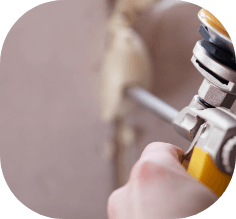
Cable Transit
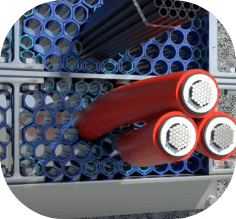
Cable transit devices are designed to prevent the spread of fire and smoke from one comportment to another where electrical data and communications cables penetrate through separating walls and floors.
Transits consist of a square or round section steel sleeve, which contains a heat reactive intumescent material. The unit has an integral hinged top that provides an easy retrofit option where cables are pre-installed.
Cable transits are suitable for use in any building where electrical, data, or communication cables penetrate through fire rated compartment floors and walls, including drywall.
Typical types of buildings where cable transits are commonly used include:
Banking and Finance Buildings
Data Processing Centres,
TV and Media Studios
Apartment Buildings
Hotels
Office Buildings
Hospitals
Airports
Retail Centres
When exposed to the heat of a fire, the graphite-based intumescent material contained in the cable transit expands rapidly to close and seal the inside of the sleeve, preventing the spread of fire and smoke from one comportment to another.
Fire Rated Mortar
Fire rated mortar is a lightweight mortar compound which is designed to prevent the spread of fire from one compartment to another where services penetrate separating walls and floors.
Fire rated mortar provides up to four hours of fire resistance.
Fire Rated Mortar is particularly suitable for reinstating compartment floors where HVAC ducts, pipes and electrical services have been installed. Small holes and imperfections of fit can easily be ‘made good’ using fire rated mortar.
Typical buildings where fire rated mortar is commonly used are:
Multi-story Buildings With Service Risers
Communication and Broadcasting Facilities
Hospitals, Hotels and Apartment Blocks
Power Stations and Control Rooms
Fire Rated Mortar can be used in walls or floors.
How does fire rated mortar work?
When exposed to the heat of a fire, the excellent thermal insulation properties of fire rated mortar provides an effective barrier, preventing the passage of fire and smoke. Unlike sand and cement mortars or concrete, the special formulation resists shrinkage and
cracking in a fire situation. During installation and the curing process, fire rated mortar actually expands, ensuring that an excellent seal is possible even in irregular openings.
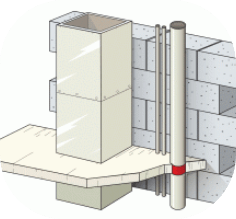
Fire Pillows
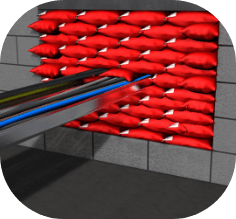
Fire pillows are designed to provide a flexible system to prevent the spread of fire from one compartment to another where there are openings for services passing through separating walls and floors. Fire pillows provide up to 4 hours of fire resistance.
Fire pillows are manufactured from high-grade glass fibre bags and contain non-combustible fillers which expand when exposed to fire conditions. Fire rated fire pillows are unaffected by moisture, humidity and are suitable for a wide range of permanent or temporary fire seals. Fire pillows provide an extremely versatile solution where services are being regularly changed.
Our fire pillows are comprehensively tested and assessed by independent authorities in accordance with BS476-20:1987 and EN1366-3:2004, for up to 4 hours of fire resistance.
Fire rated fire pillows are suitable for use in most buildings where services pass through openings in fire rated compartment walls and floors. They can be used on walls or floors.
When exposed to a fire, the filler materials in the fire pillows expand to form a durable insulating barrier, thereby maintaining the integrity of the seal and preventing the spread of fire from one compartment to another.
Typical buildings where fire pillows are commonly used include:
Computer Rooms
Telecommunications and Broadcasting Facilities
Hotels
Commercial Office Buildings
Hospitals
Airports
Retail Centres
Industrial Buildings
Any opening that requires a temporary fire seal
Pipe Collars
Pipe Collars are designed to prevent the spread of fire from one compartment to another where plastic pipes penetrate separating walls and floors. Pipe collars provide up to 4 hours of fire resistance.
Pipe collars consist of a split-hinged. powder-coated steel shell which contains the heat reactive intumescent material. The unit is held closed around the pipe by a toggle and latch for ease of closure by the installer.
Pipe collars are suitable for use in any building which has plastic pipes penetrating fire rated compartment walls and floors.
Typical types of buildings where pipe collars are commonly used are:
Flats and Apartment Blocks
Hotels
Hostels
Halls of Residence
Prisons
Office Blocks
Hospitals
Airports
Retail Centres
When exposed to the heat of a fire, the intumescent material contained within the pipe collar expands and exerts pressure on the melting plastic pipe, causing the opening to be closed off and thus preventing the spread of fire from one compartment to another.
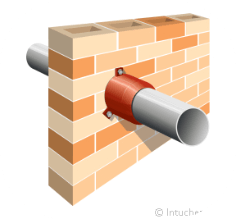
Intumescent Dampers
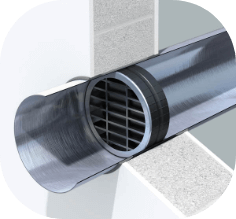
lntumescent dampers are designed to prevent the passage of flame and smoke through or into air movement ventilation ductwork or through air transfer apertures in walls, timber and steel fire doors.
lntumescent Dampers are manufactured from galvanised channel and comprise horizontal metal blades lined with a heatreactive intumescent material. Intumescent dampers are available for circular, rectangular and square ducts and apertures.
lntumescent dampers should be used to prevent the spread of flame and smoke from the room of the fire origin to other compartments and escape routes through ventilation ductwork as outlined in method 1 of BS5588-9.
Intumescent Dampers can also be installed in timber or steel fire doors, fire compartment walls or partitions where such apertures form part of an air distribution system. Louvre cover plates are also available.
In a fire situation, the intumescent material will expand within the damper, fully closing the duct or air transfer aperture to the passage of hot smoke to adjacent voids and compartments.